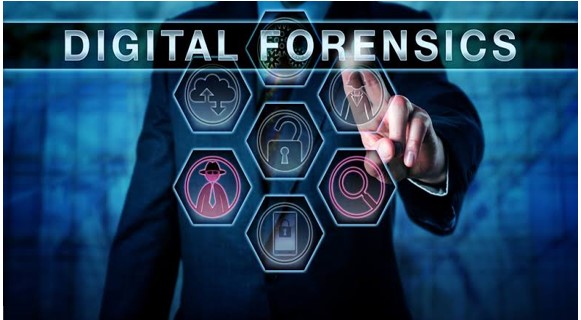Forensics is the employment of scientific procedures or testing in criminal investigations, while the process of retrieving and preserving data from digital devices is known as “digital forensics.” Data is frequently encrypted, erased, or buried, necessitating the employment of digital forensics.
Digital forensics can be divided into five main categories based on the location of data storage or the method of data transmission. The recovery and preservation of digital evidence can be aided by the use of gear and software known as “digital forensics tools.” Digital forensics tools can also be used by law enforcement to gather and maintain digital evidence as well as to confirm or deny theories in court.
What is Digital Evidence?
Any material that is stored on digital devices that is admissible in court is considered digital evidence. Typical instances include data kept on a computer or mobile device, including emails, pictures, and browser histories.
Other instances include a car’s navigation history, records from an electronic door lock, swipes and scans on a transit card, and temperature settings. Digital evidence frequently outweighs other sorts of evidence in volume, expressiveness, and accessibility due to the pervasiveness of digital devices used in crimes.
Due to the prevalence of digital devices in contemporary society, digital evidence is frequently linked to cybercrimes including cyberattacks, child pornography, and credit card fraud, but it can also be recovered in so many different crimes.
In addition, digital evidence can be altered or replicated, its authenticity is frequently contested, although American courts typically dismiss this claim in the absence of evidence of tampering. When managing digital evidence, law enforcement agencies should follow the correct chain of custody procedures and make sure that all evidence is kept intact to allow for accurate forensic analysis.
When handling digital evidence, the authorities should also take the appropriate safety procedures. Evidence from a different crime may be found when detectives extract evidence from a digital device. The evidence cannot be used in court without a second warrant, which must be obtained by the investigators. Generally speaking, thieves frequently leave digital traces on their electronic devices.
Quick look at Digital Forensics Tools

Software and hardware for digital forensics are interchangeable in law enforcement. Due to the greater prevalence of these two fields, the majority of tools accessible to law enforcement, whether open source or commercial, focus on computer and mobile device forensics. Let’s have a look at them for a sec.
Hardware tools
Hardware tools are created exclusively for external hard drive investigations with the goal of maintaining the integrity of the evidence by not altering suspect devices.
A read-only device known as a forensic disk controller or a hardware write-blocker enables users to access the data on a questionable device without running the risk of changing or destroying the data. On the other hand, a disk write-protector prohibits alterations or deletions to the data stored in a storage device.
A hard-drive duplicator is an imaging tool that copies every file on a questionable hard drive onto a secure digital (SD) card. It can also copy data from flash drives or other storage devices. A password recovery device uses techniques to try to break password-protected storage devices, including brute-force or dictionary attacks.
SOFTWARE TOOLS
Most forensic software programs are multi-purpose and may carry out several tasks simultaneously. Some programs are open source, which enables skilled programmers to alter the code to suit their unique requirements and saves money for law enforcement. Some can manage various operating systems or process multiple devices at once (e.gWindows and Linux).
Law enforcement has access to hardware gear and computer forensics software. Software programs can obtain and evaluate the digital evidence gathered from the suspect device while hardware techniques, such as write-blockers, primarily focus on protecting the evidence in a target device.
However, forensic analysis applications can help investigators recover this evidence. Suspects frequently delete or hide their files, or partition their computers’ hard drives, making it difficult to find evidence. When a file is created, modified, accessed, transferred, or destroyed, the Windows Registry keeps track of these events. Some software can perform registry analysis to gather and examine these traces.



Leave feedback about this